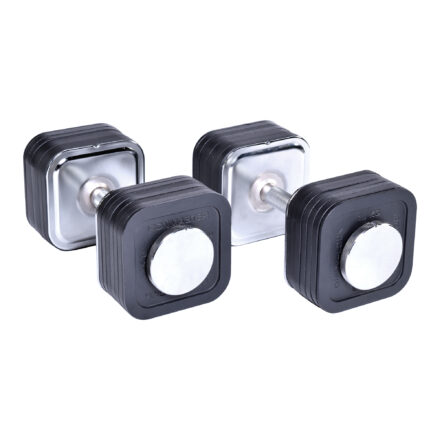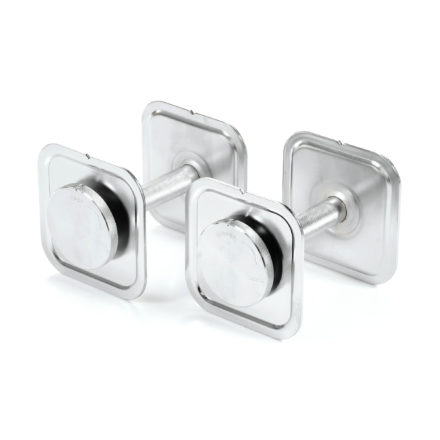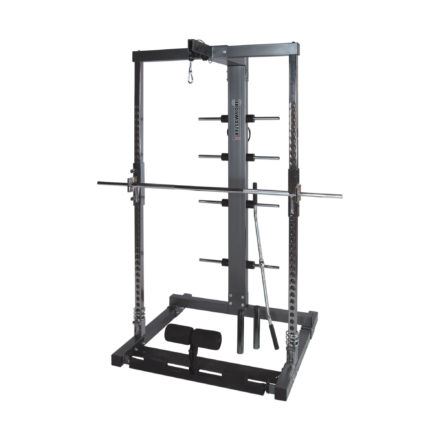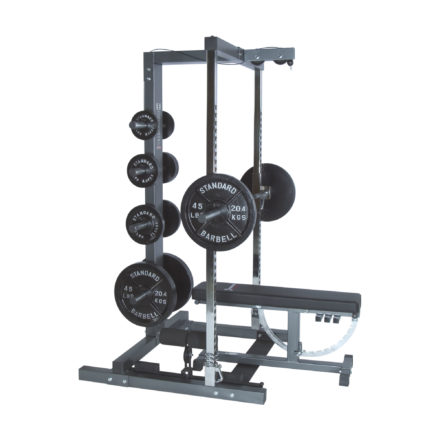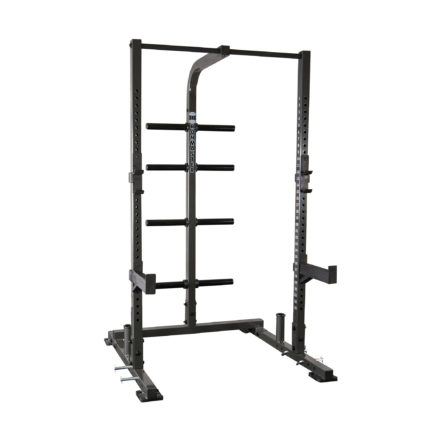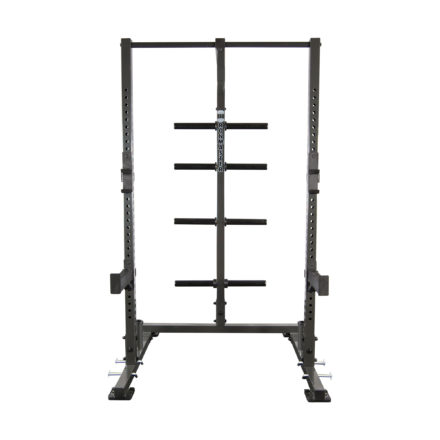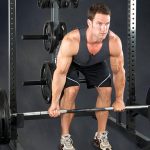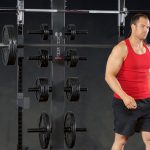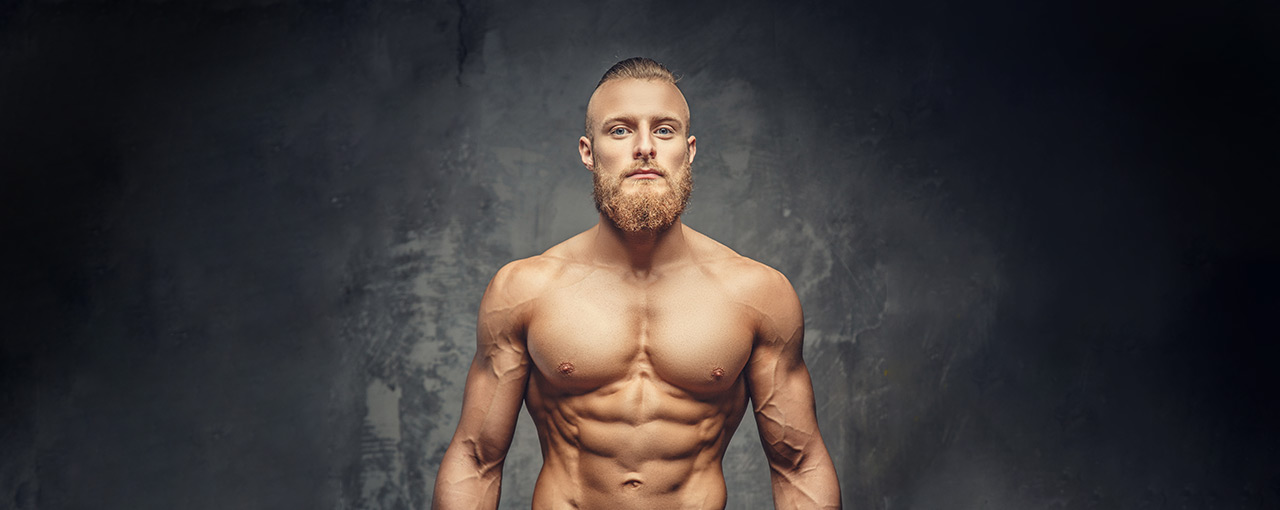
9 Things Every Home Gym Trainer Must Do Before Lifting A Weight
Keep your kit – and yourself – out of trouble with our home-gym safety checklist
Having a home gym set-up is everyone’s idea of paradise. No queues, no crowds, and no-one hogging the bench whilst they update Facebook. But strength training at home means everything is your responsibility: including safety. A few safety checks will keep your equipment (and your body) in great nick for longer.
1. Buy To Last
Kitting out a home gym is never going to be the cheapest decision you make. And, yes, you’ll need to run every budgetary decision past your nearest and dearest. But buy the best strength training equipment for your home gym within your budget. Don’t skimp on key bits of kit like barbells, dumbbells, bench, and rack. The best home gym equipment should last you for decades.
If you buy equipment for a home gym which isn’t designed for heavy weight lifting training, you’ll replace it all within a couple of years. So ask yourself: will you still be lifting heavy 2-3 years from now?
2. Buy Safe Weight Lifting Equipment For Home Use
Strength and conditioning equipment that’s ideal in a commercial gym isn’t always best for a home gym. Even weight lifting kit that’s suited to good old spit ’n sawdust gyms isn’t always the best buy for a home gym.
You’ll need to factor in budget, space, and your weight training goals. But some universal rules apply. Here are 3 of them….
3. Get A Power-Rack or Half Rack
A quality power-rack or half rack will be the centre piece of your new home gym. Design the rest of your set-up around it. There’s so much you can achieve with a rack: squats, rack pulls, overhead press, pin presses, shrugs…. You can no doubt add plenty to this list.
But that’s not the only reason to buy a rack for your home gym. They offer you a high level of safety, particularly if you train alone. The pins will come to your rescue if you fail a lift, meaning you only get stuck in the hole rather than getting stuck under the loaded bar. The J-hooks make it safe and simple to walk out with the bar. And you can add accessories like pull up bars, safe in the knowledge that your solid rack won’t give way.
Make sure your rack is tall, so you can overhead press inside it. And check that your rack can handle enough weight. You never know how strong you’re going to get on squats, rack pulls, and shrugs.
4. Dumbbells For Small Spaces
Few home gyms have enough space to accommodate a long rack of dumbbells. So buy smart dumbbells designed for home gyms use. Quick-Lock Dumbbells are ideal: the entire system stores vertically, so you only need the footprint space of one set. You’ll be able to lay your hands on dumbbells from 5 lbs right up to 165 lbs (if that’s your thing!) without a huge rack of different dumbbells.
5. Your Very Own Barbell
Most home gym users say that the best thing about having their own setup is having a beautiful barbell all to themselves. No one else will ever touch your barbell (unless you let a trusted training partner work in with you). Your barbell will arrive, pristine and gleaming. And you will be the only person to ever use it. So buy wisely. This might be the only barbell you ever need.
Quality barbells don’t just look better, they feel better and are safer to use. Buy a home gym barbell that’s strong and won’t bend no matter how heavy you squat. Look for revolving sleeves and quality collars so you can perform all the exercises you want to do. You’re going to spend a lot of time with that bar. Choose something you’ll love.
6. Regular Equipment Checks
When you’ve got a home gym, you have to be Cleaner, Health & Safety Manager, and Chief Purchasing Officer. Don’t avoid the boring but crucial jobs: cleaning, tidying, and regular equipment checks. What do you need to do? That depends on your kit and how you train.
Barbell checks: home gym barbells go through a lot. Material fatigue, impact, and weight load can all add up. Pay attention where the bar diameter is smallest (grooves and knurling). If you tend to drop your bar after a lift, check it at least once a week. Give it a visual once-over for damage and check the bolts.
Power-rack: a good quality power-rack shouldn’t need much upkeep, but use common sense. Screw it down when you first put it in place. This bit of kit gets a lot of use, so check the bolts, pins, hooks, and any attachments at least once a month. Keep an eye out for weld cracks.
Bench: you’ll move your home gym bench around, and change the incline. Over time, some settings will see more wear and tear due to your personal incline preference. So check for loose bolts, weld joints, wear and tear. Oil any moving parts, and keep the upholstery clean and dry.
Dumbbells: solid quality dumbbells shouldn’t give you any problems, but it’s a good idea to check bolts, and look for signs of metal fatigue. But we reckon a good set of home gym dumbbells should last a lifetime.
7. Never Squat With Children Or Animals
There are tons of benefits to having a home gym set-up. But here’s one reason to love a commercial gym… you’re unlikely to have kids running about the gym floor, and a cat won’t thread itself through your feet as you’re setting up to squat. Kids and pets are two potential risks when you train at home. So set some ground rules (for the kids, at least. We’ll let you know if we ever work out how to tell a cat what to do).
Bring your kids up to know that your gym is not a playground. That it has heavy equipment which could hurt someone if there’s an accident. Show them how to treat the space with respect. Keep pets out. Consider putting a sign on the door, or having some other way to tell people when the gym is in use.
8. No Spotter? No Problem
Some guys train at home with a trusted training partner. But for many people, the entire point of having a home gym is to get away from other people! Your music, your equipment, your choice of exercises. If you do train at home by yourself, use some common sense to stay safe.
Tell someone that you’re going to train, and how long you’re likely to be. Should the unthinkable happen, at least someone will come looking for you! A power-rack with pins and safeties will save you from injury if you ever fail a lift. And it will allow you to go to failure without worrying.
9. Keep Your Home Gym Tidy
People with home gyms tend to be the type who put their weights away anyway. But now you’ve got a home gym, it’s even more important to keep your weight training space tidy. When you design your home gym, don’t make it cluttered. Less is more (you can always add kit at a later date). You need to be able to move around the space without knocking equipment or bumping your shins on the end of a bar. Keep dumbbells and weight plates in their racks and up off the floor. Don’t leave your barbell loaded.
Tidy your gym space before your turn the lights out after every workout. It’ll look so much nicer next time you go to train. You know what they say, tidy gym, tidy mind, and if they don’t, they do now.

